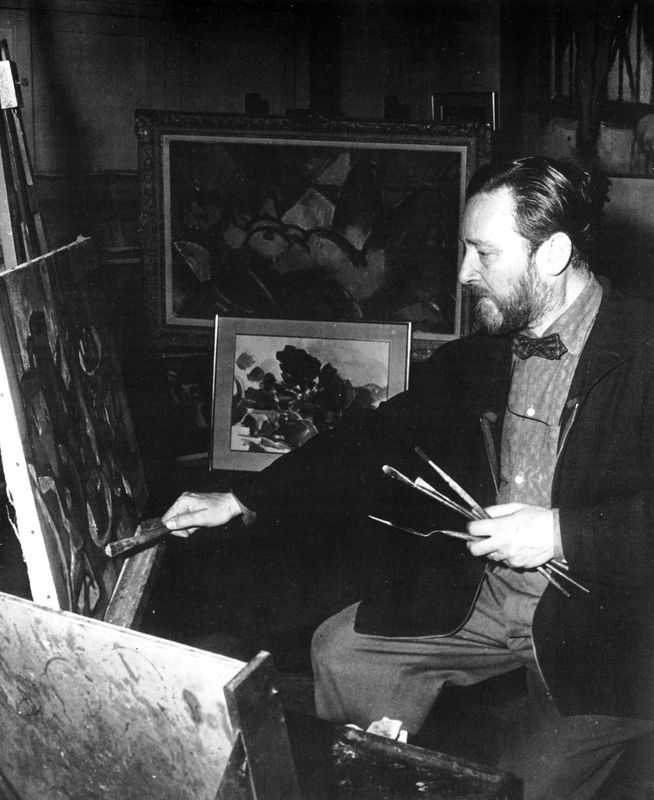Jean Dries
 Jean Dries was the name used by the artist Jean Driesbach, who was born on October 19, 1905, in Bar-le-Duc in Meuse, France and died in Paris on February 26, 1973. He was a Lorrain painter by birth and was born the year Fauvism appeared at the Salon d'automne. He became a Parisian painter when he studied under Lucien Simon at the Ecole des Beaux Arts in Paris, through his adventures in the "zone", setting up several studios before finally settling in the Île Saint-Louis at 15 quai d'Anjou.
Jean Dries was the name used by the artist Jean Driesbach, who was born on October 19, 1905, in Bar-le-Duc in Meuse, France and died in Paris on February 26, 1973. He was a Lorrain painter by birth and was born the year Fauvism appeared at the Salon d'automne. He became a Parisian painter when he studied under Lucien Simon at the Ecole des Beaux Arts in Paris, through his adventures in the "zone", setting up several studios before finally settling in the Île Saint-Louis at 15 quai d'Anjou.He was also a Provençal painter since he spent time in Provence following in the steps of Cézanne and Van Gogh in the 1930s and set up his last studio in Aurel, Vaucluse.
He can also be considered a painter from Normandy where he was drawn by his friends Jean Jardin and Edmond Duchesne and where he bought a house for his family in 1936. From 1953 to 1973 he was the curator of the Eugène Boudin Museum in Honfleur which still has some of his works on display.
As Jean Dries believed that art transcended national borders he never stopped travelling outside of France and even Europe. His admiration for Spanish and Italian masters led him to Spain and Italy. He taught art at the French colonial school in Sétif (Algeria) for a few months and was sent by the French government to Mendoza (Argentina) in the spring of 1940 to set up pictorial art studies at the University of Cuyo and to promote French culture.
Esthetically, he proclaimed himself to be totally independent. Starting in 1928 he exhibited in various Parisian Salons – Salon d'automne, Salon des Tuileries, Salon des indépendants – and steadfastly refused to be part of any school, style or genre. He painted landscapes, portraits, self-portraits, nudes, still lifes, seascapes, horse races and bullfights.
Although tempted by Impressionism, Cubism and especially Fauvism, he never gave into abstraction or non-figurative art. In his ''Blue Notebook'' he wrote "One cannot do without nature. One must neither torture it or oneself." He was a great colorist while remaining attentive to the balance of composition. It has been said of him that he was a "fauve Cézanne". Provided by Wikipedia
